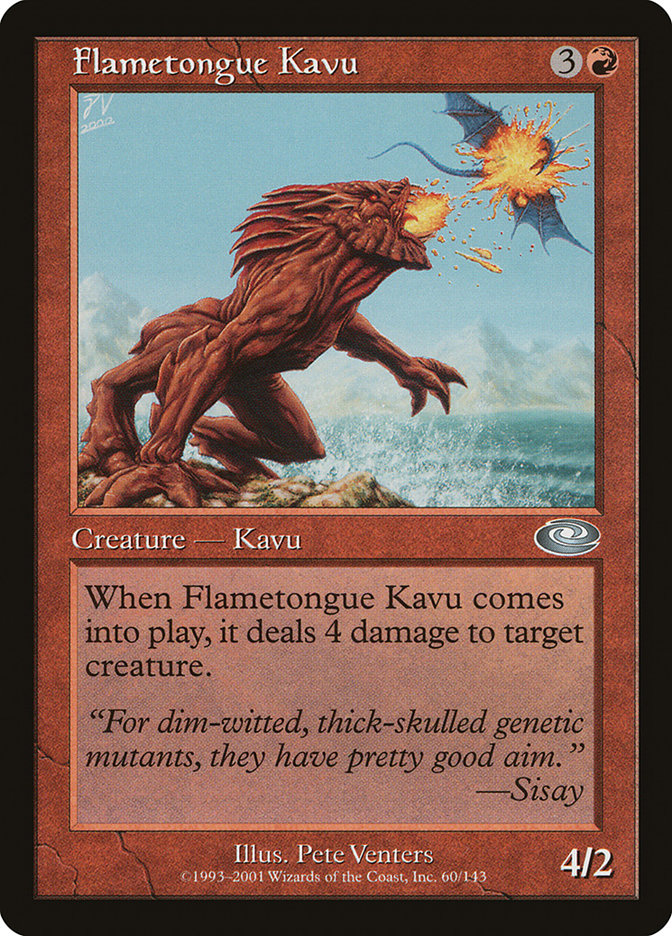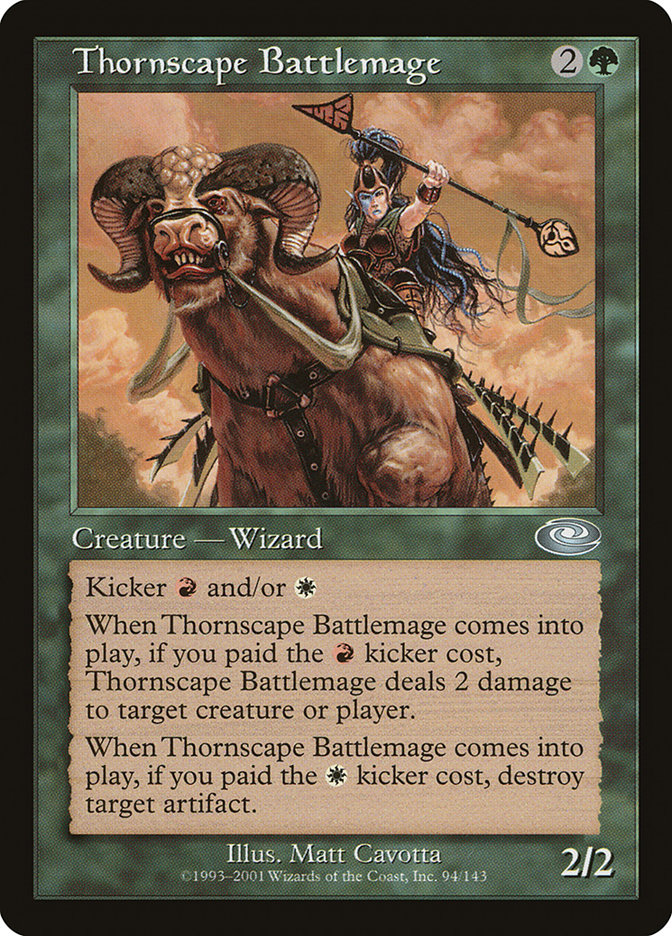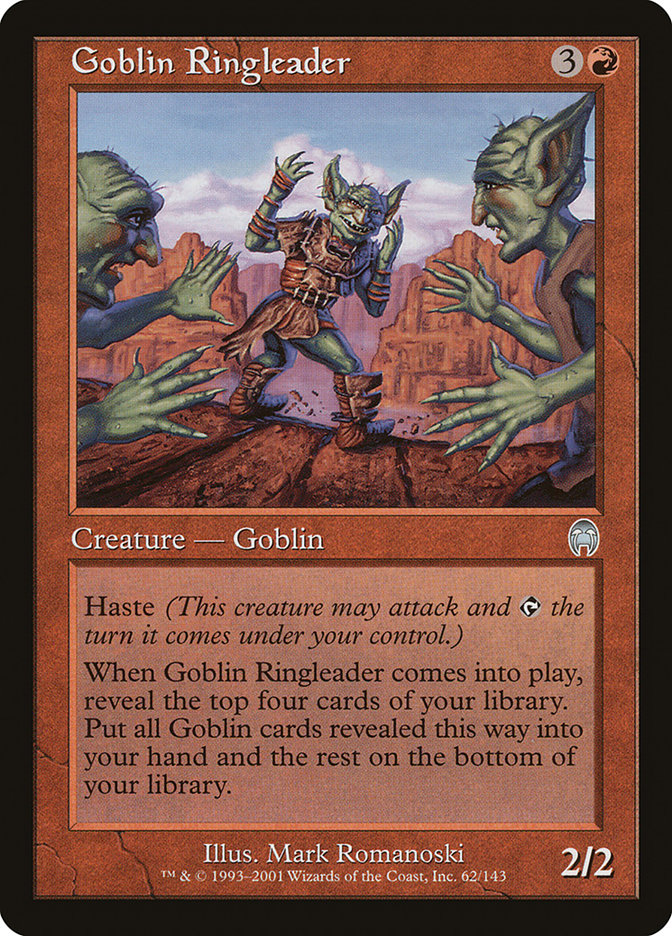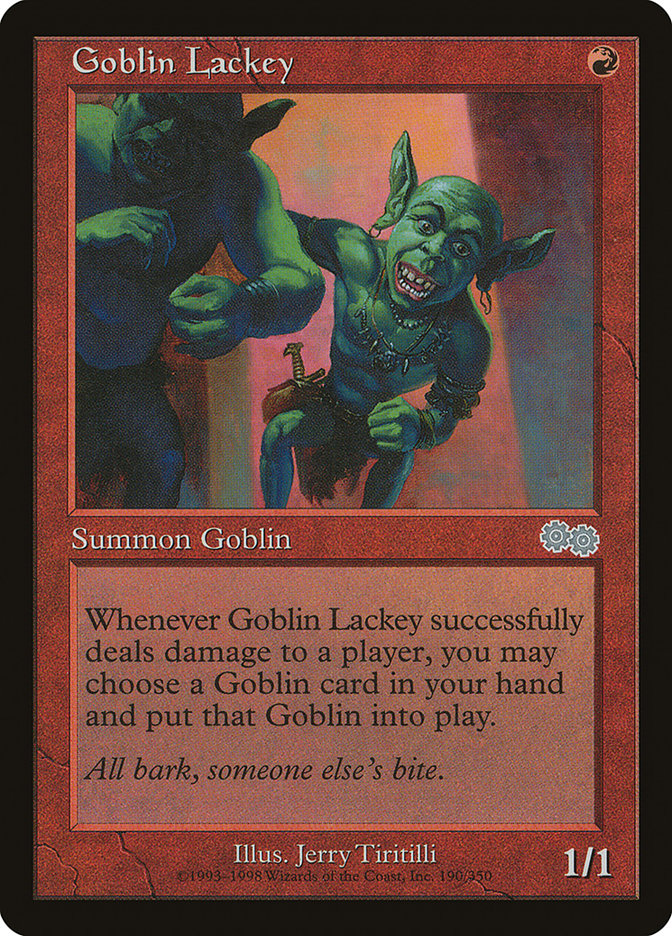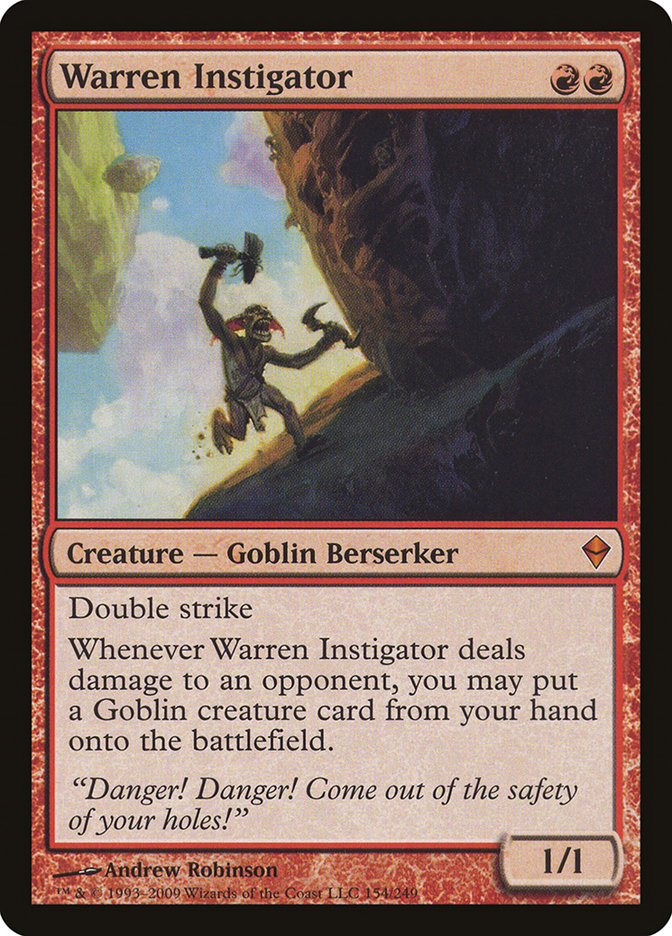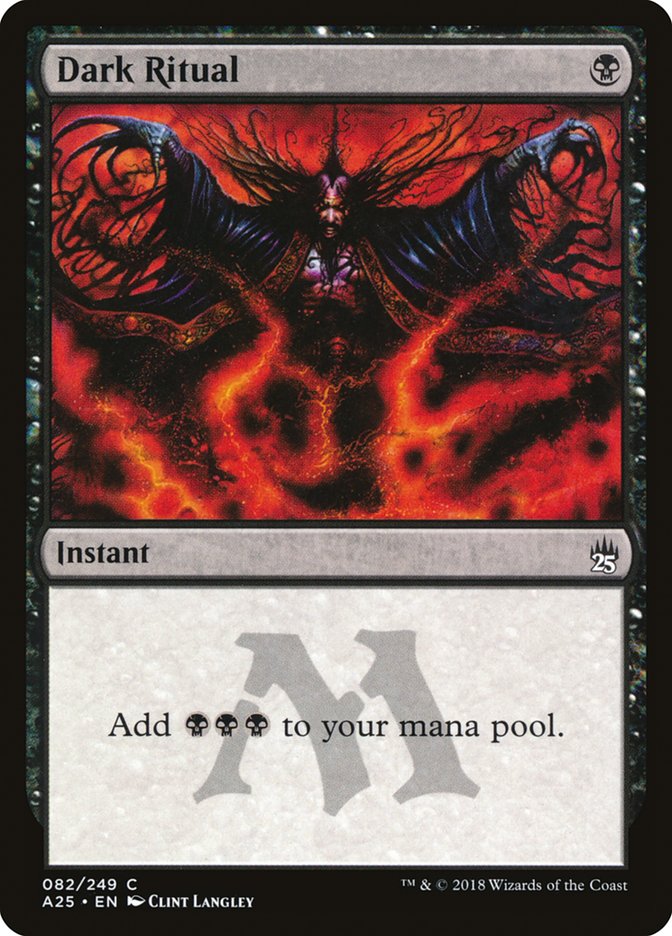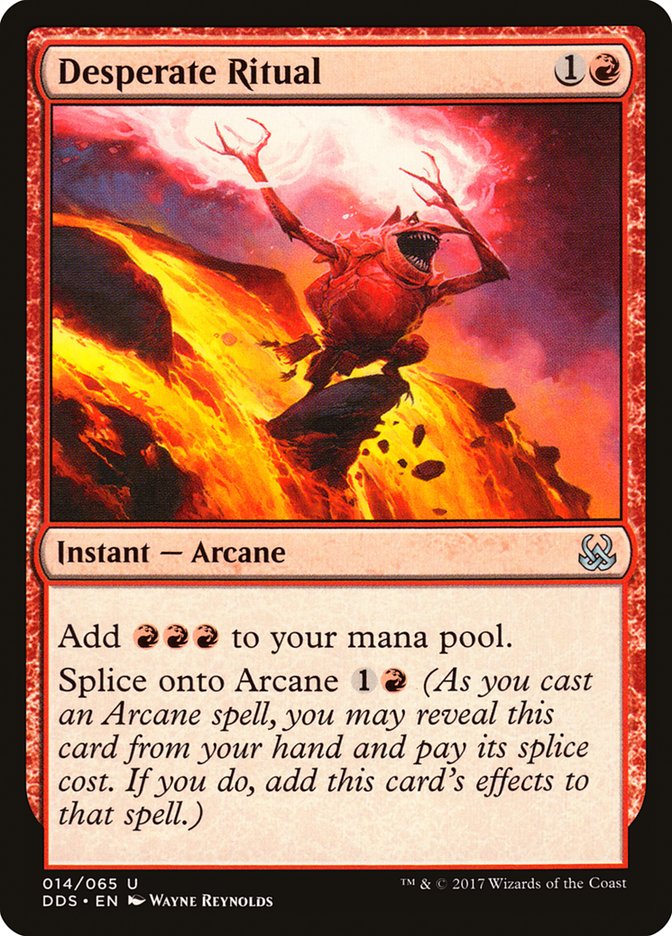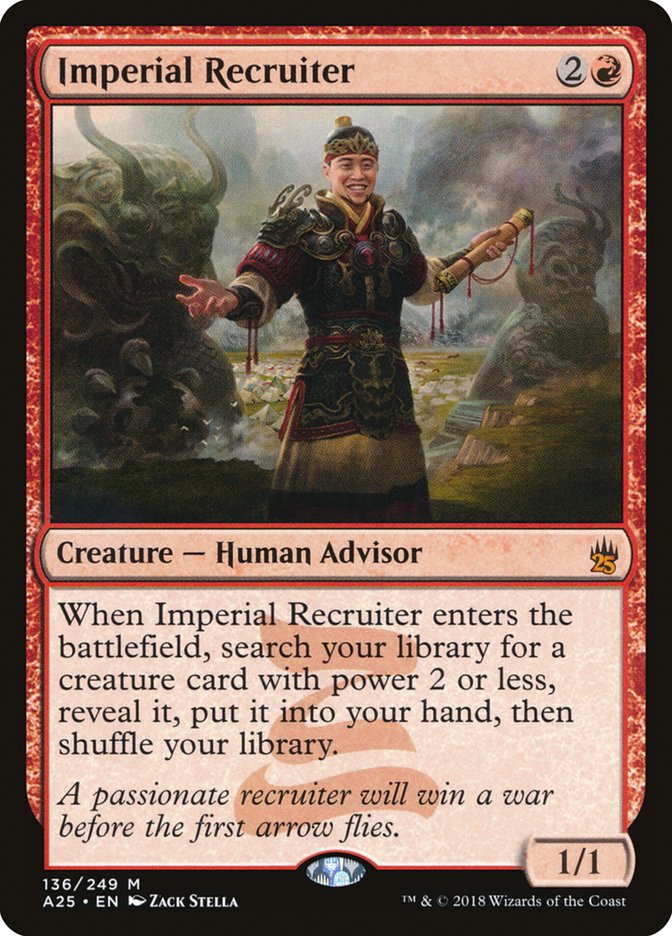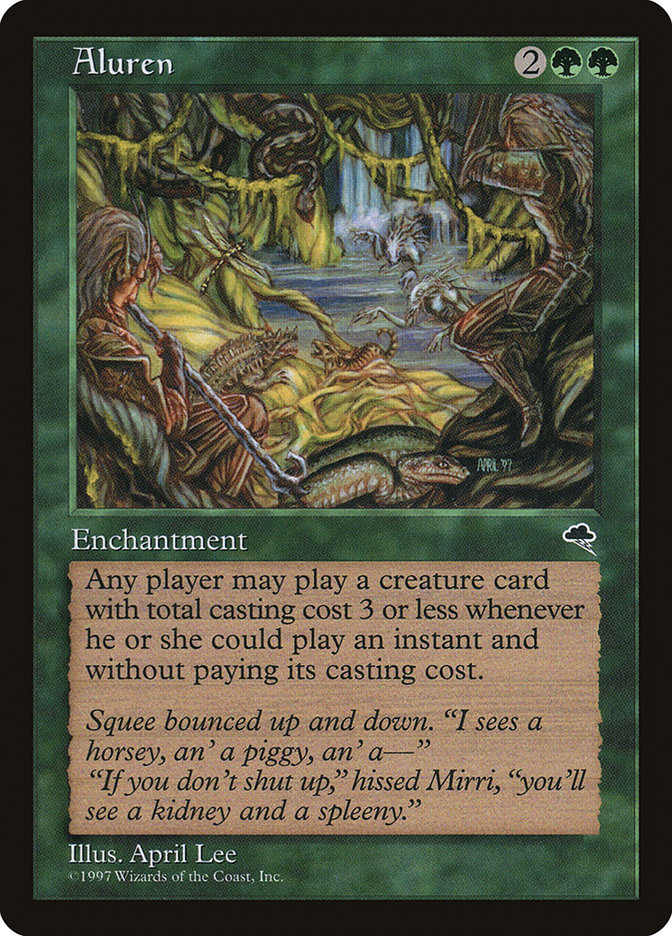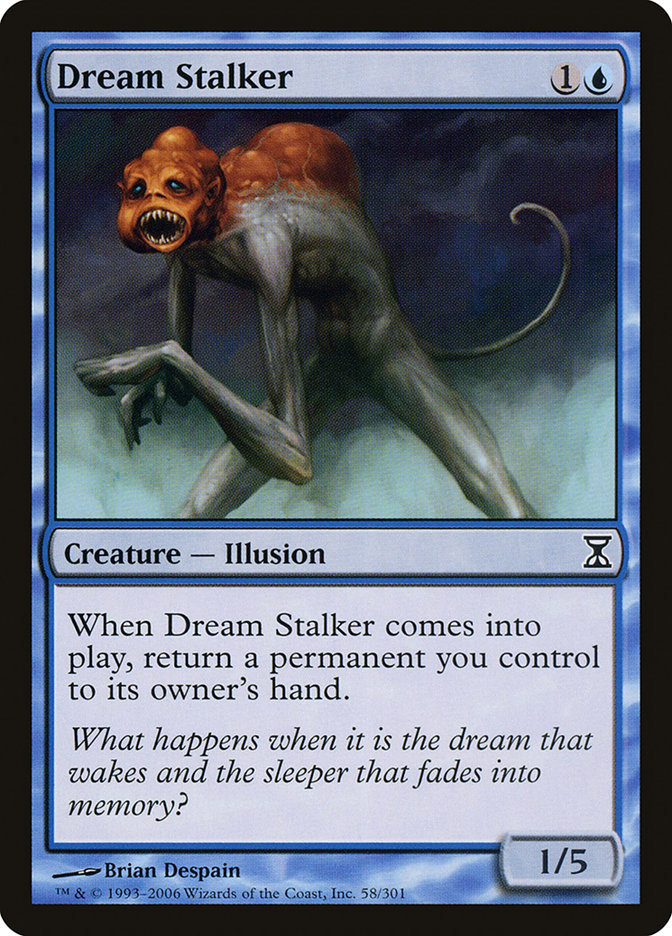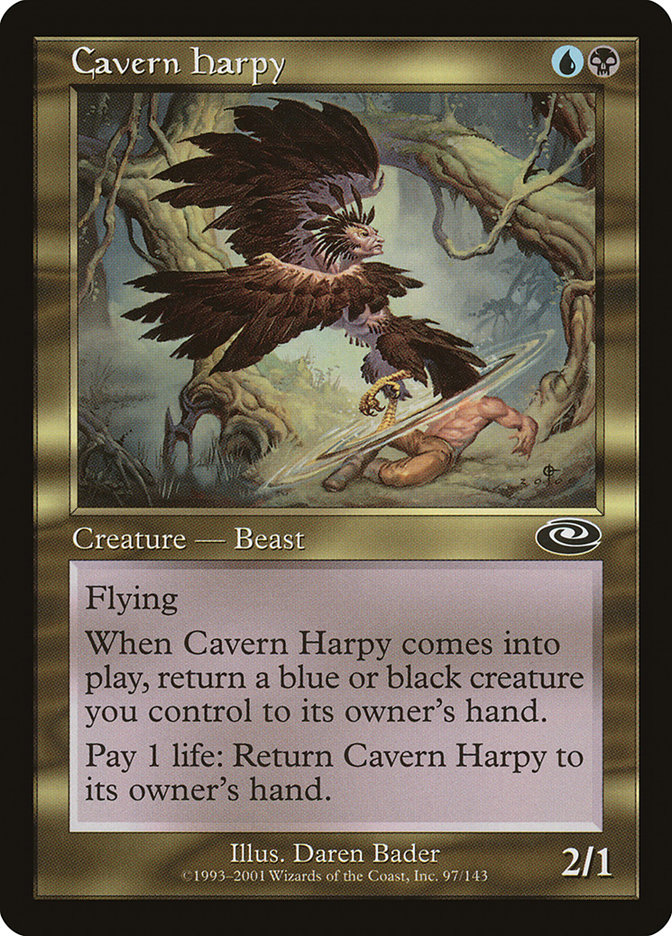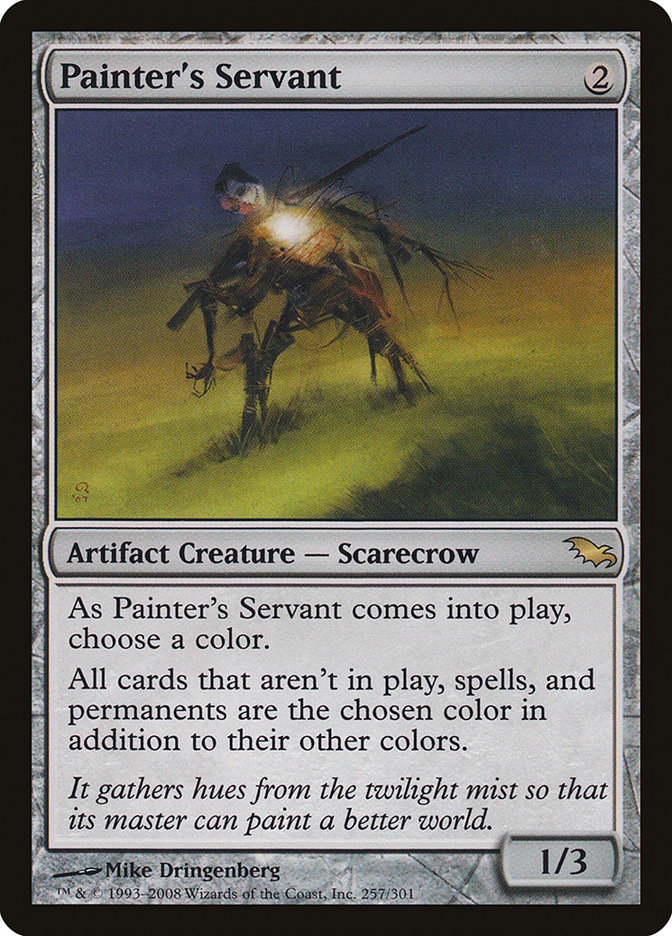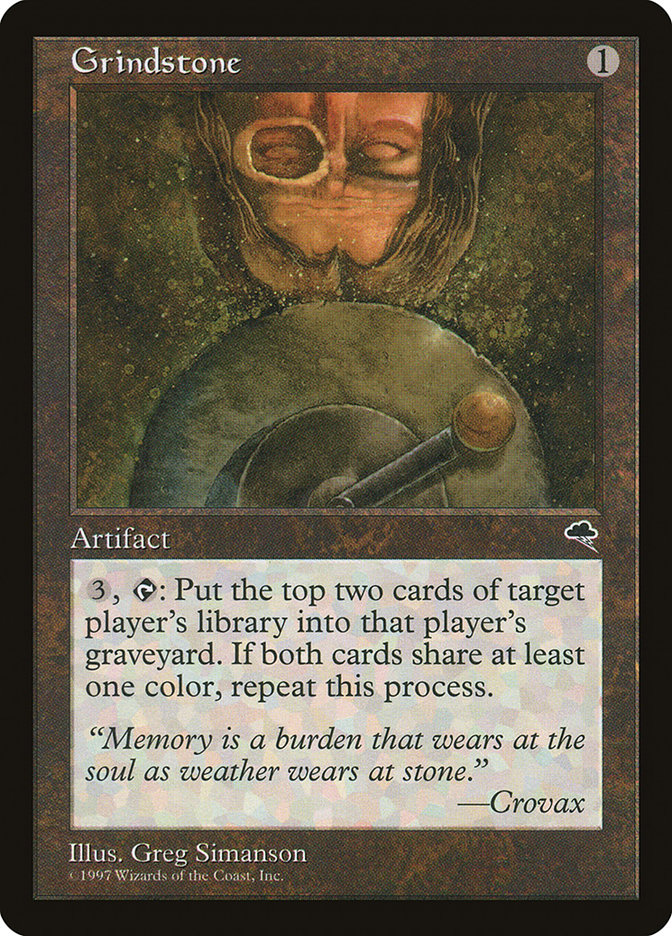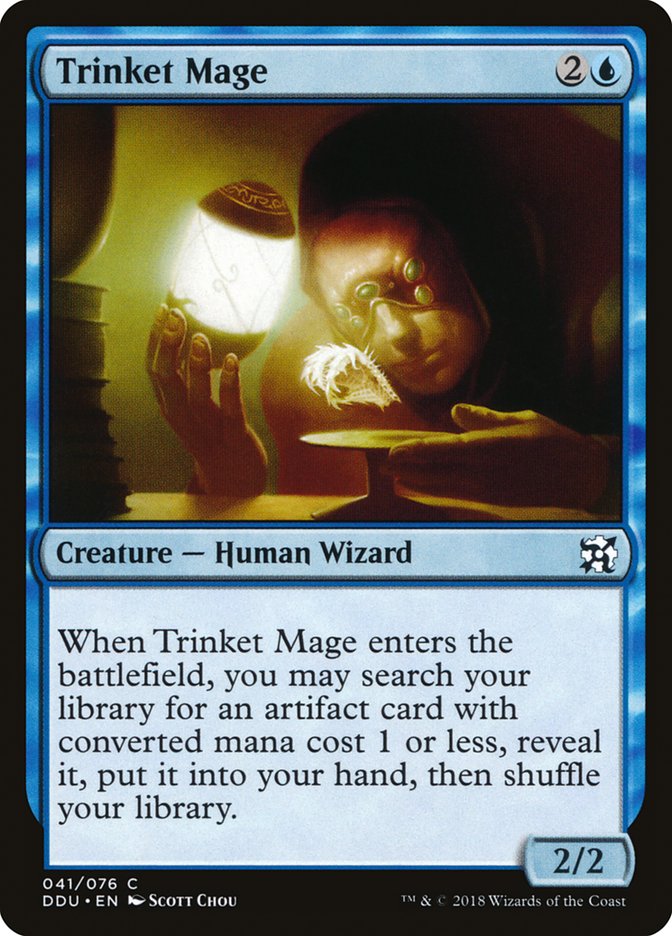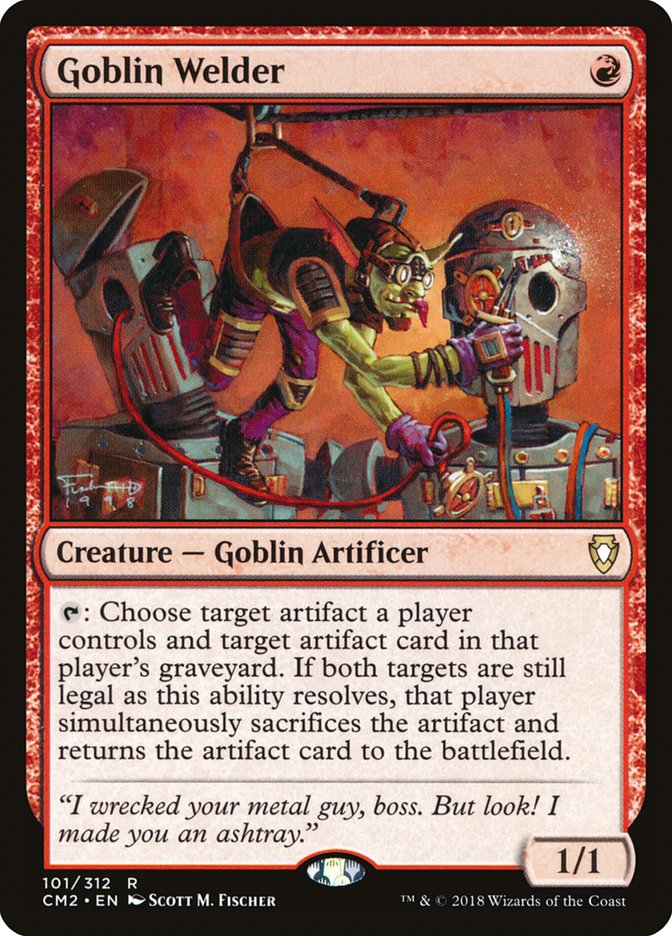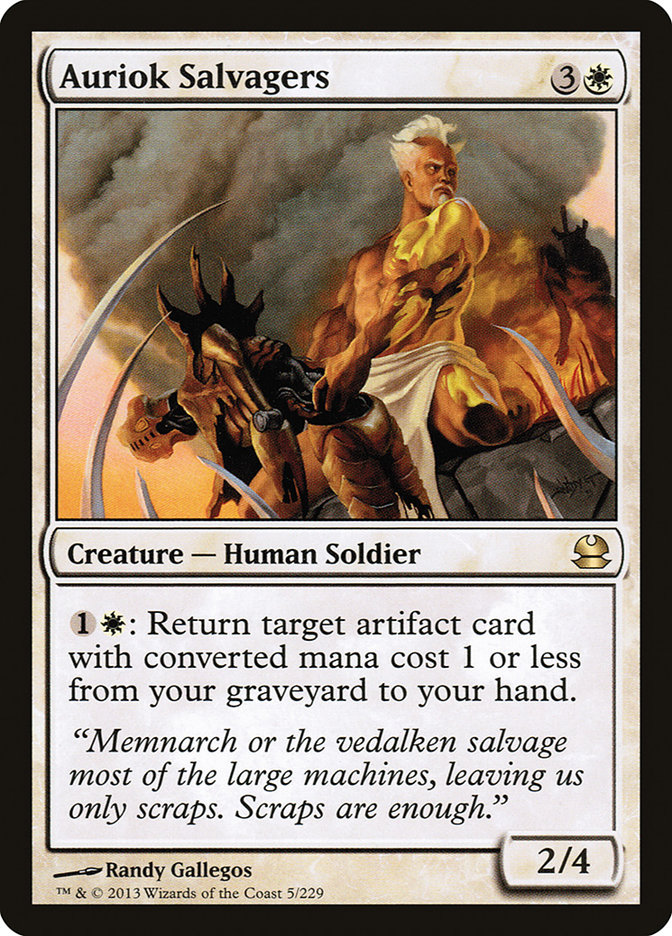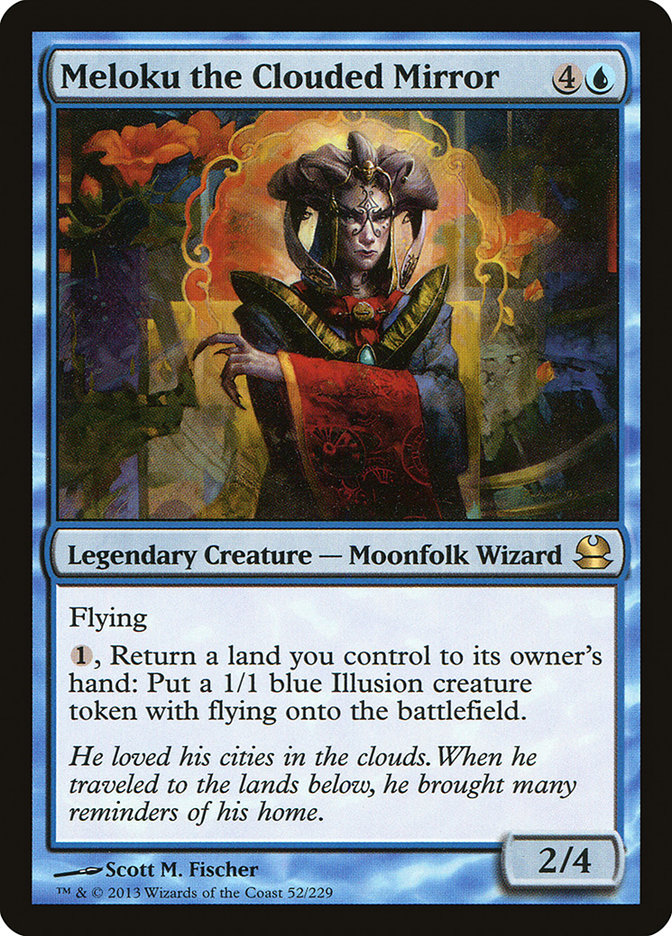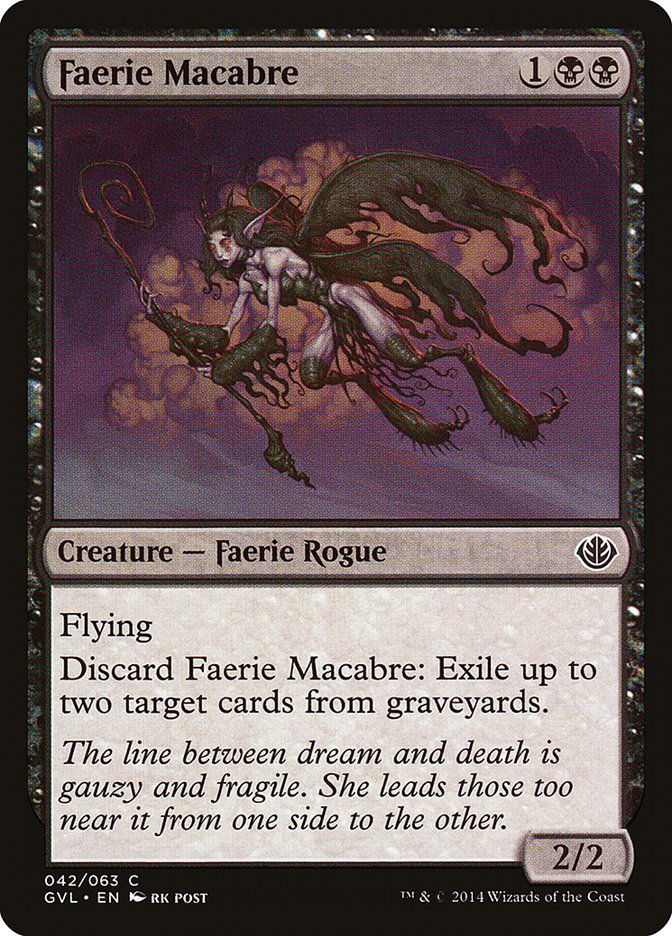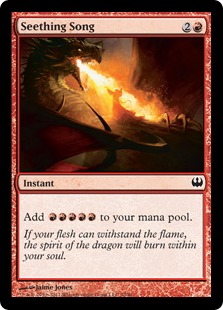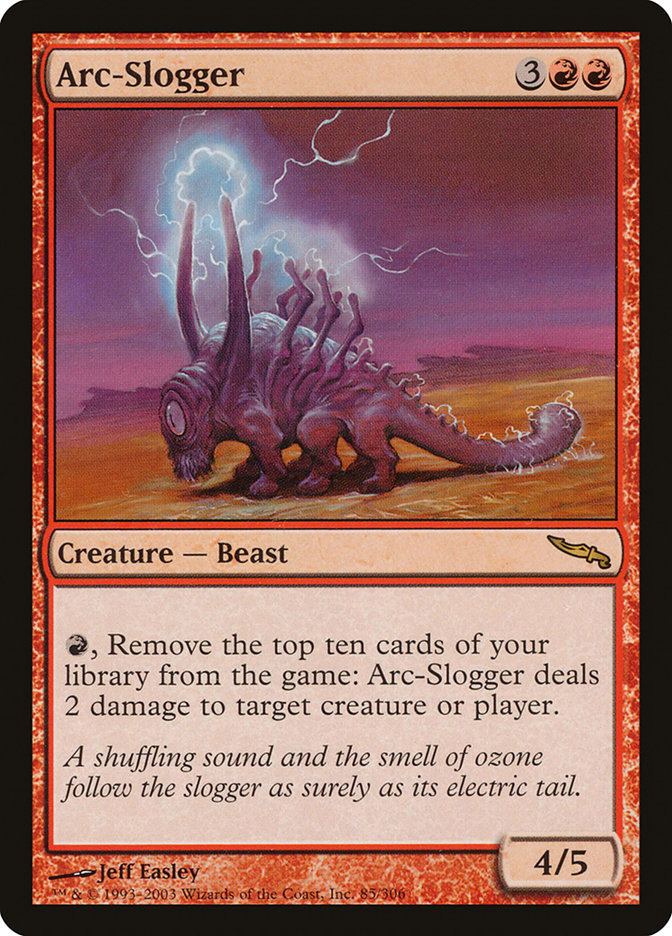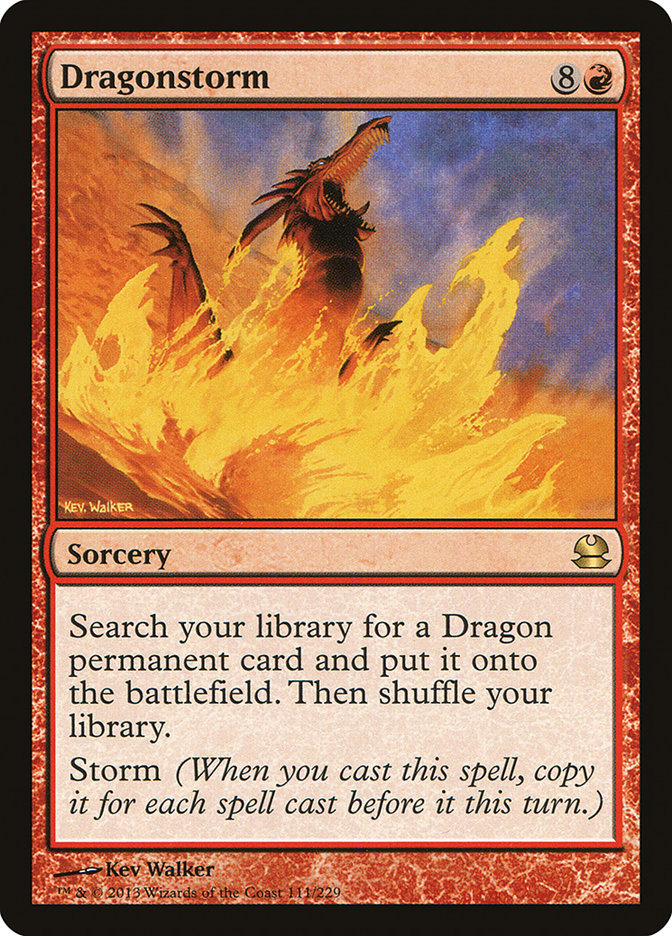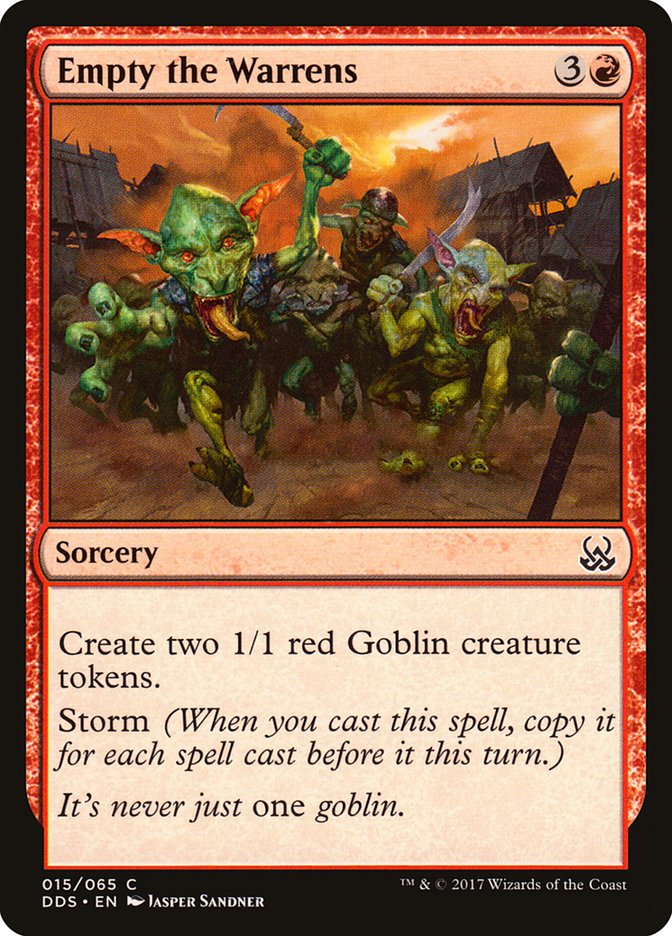Last week, we embarked on a journey through the ages, looking at the 25
best green cards of all-time (
Green 25-21
,
Green 20-16
,
Green 15-11
,
Green 10-6
,
Green 5-1
). This week…
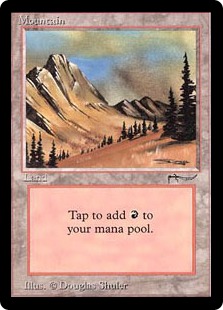
Red has evolved a fair bit over the years. While it has remained the burn
color, its focus on land destruction, chaotic effects, and global
destruction has toned down a bit. Instead, its replaced its former weakness
(cheap creatures) with a strength (cheap creatures). Additionally, fast
mana and Tormenting Voice style looting was added to the color, in order to
try to expand its range a little.
Analyzing the top 25 red cards of all-time is particularly challenging.
What’s “better,” another ritual banned in powered formats, or another
insane five-drop Dragon that dominated Standard?
I guess we’ll just have to see…
#25: Flametongue Kavu
Flametongue Kavu being only 25th on this list might be sacrilegious by some
folks’ accounting, particularly given how historically warping the card was
when it was in Standard. If we were going to only count the impact cards
would have in most Standard formats, Flametongue Kavu would undoubtedly be
much higher. While it can get stranded against a creatureless opponent,
having access to a quality 5/5 or two goes a long way for giving you a
backup plan.
Flametongue Kavu’s first Pro Tour was the Invasion Block PT Tokyo
2001. While Zvi Mowshowitz ran the final table and took home the trophy
with his innovative U/W “Solution” deck built to hose Flametongue Kavu
decks, it was the Team ABU build of R/G Aggro that dominated the swiss like
few decks ever have, putting four members of their team in the top 8 with
the same deck.
Creatures (28)
- 4 Raging Kavu
- 4 Thornscape Familiar
- 4 Thornscape Battlemage
- 2 Flametongue Kavu
- 4 Skizzik
- 4 Kavu Titan
- 2 Kavu Runner
- 4 Blurred Mongoose
Lands (24)
Spells (8)
Sideboard

Interestingly, despite Flametongue Kavu being the consensus best card in
the format, the ABU R/G only maindecked two, assuming enough of the
metagame was going to be built to make the card line up poorly.
Thornscape Battlemage over Flametongue Kavu?
If the format gets warped enough, we start to see some funny things, such
as Thornscape Battlemage getting the nod over Flametongue Kavu, despite no
white mana. Why? Well, Thornscape Battlemage can kill protection from red
creatures, not to mention being able to be played into an empty battlefield
or go upstairs with its damage.
Of course, even if it was somewhat a victim of its own success, Flametongue
Kavu is still a much better card.
#24: Goblin Ringleader
Long before he picked up the mantle for best player in the world, Hall of
Famer Owen Turtenwald picked up his first GP Top 8 at Grand Prix Columbus
2007 (the GP where Flash + Protean Hulk was absurdly broken).
While Flash Hulk dominated the event and the conversation, Owen rode an
unassuming Goblins deck all the way to the finals, relying on just enough
interaction to buy himself time and the powerful card advantage made
possible by Goblin Ringleader.
Creatures (33)
- 4 Mogg Fanatic
- 4 Goblin Matron
- 4 Goblin Lackey
- 4 Goblin Warchief
- 1 Goblin Sharpshooter
- 4 Goblin Piledriver
- 4 Gempalm Incinerator
- 2 Siege-Gang Commander
- 4 Goblin Ringleader
- 2 Tin Street Hooligan
Lands (23)
Spells (4)
Sideboard

Goblin Ringleader is kind of like a Mulldrifter with haste that costs less,
draws more cards (and with selection), and has absolutely incredible tribal
synergies.
Goblin Lackey deserves an honorable mention, to be sure, though quite a few
of these Goblins would show up in the top 50 list.
How can Goblin Lackey be so deserving of praise, if Warren Instigator
isn’t?
Well, the difference between Goblin Lackey and Warren Instigator is kind of
like the difference between Dark Ritual and Desperate Ritual.
When a card’s primary function is to accelerate you, the difference between
a one-cost card and a two-cost card can be a lot, and when it’s a creature
with summoning sickness, the difference is felt even stronger.
#23: Imperial Recruiter
Goblin Matron is already a pretty intense card, but Imperial Recruiter is
just weird. Why in the world should red get this insane of an Eladamri’s
Call?
Imperial Recruiter is often discussed in the same breath as Aluren, given
how reliably this two-card combo will win the game.
Drop Aluren and Imperial Recruiter is free and can go find another Imperial
Recruiter. After playing as many as you care to, you can find a Dream
Stalker in order to bounce your Recruiter.
Next, you can go find a Cavern Harpy and use it to return your Dream
Stalker to your hand, which you then use to return your Imperial Recruiter
to your hand and keep going.
Finally, you can find Parasitic Strix and put your opponent out of their
misery.
While this may seem like a lot of cards, remember, you only need to
actually draw an Imperial Recruiter and an Aluren to pull it off. You just
need to play at least one copy of the others somewhere in your deck.
Creatures (20)
- 1 Eternal Witness
- 4 Imperial Recruiter
- 1 Cavern Harpy
- 1 Dream Stalker
- 1 Parasitic Strix
- 4 Baleful Strix
- 4 Shardless Agent
- 4 Deathrite Shaman
Lands (21)
Spells (19)

Interestingly, as powerful as the Imperial Recruiter/Aluren combo is,
Imperial Recruiter has actually enjoyed even more success in a different
fast kill combo deck.
Once Painter’s Servant hits the table, everything becomes blue (making your
Force of Wills and Red Elemental Blasts better), which in turn, means a
single Grindstone activation will mill your opponent’s entire deck.
Imperial Recruiter can find Painter’s Servant outright, or Trinket Mage, in
order to find the Grindstone.
Trinket Mage and Imperial Recruiter also lend themselves well to minor
toolboxes, such as:
Creatures (14)
Lands (21)
Spells (25)

Goblin Welder and Auriok Salvagers are an excellent couple of possible
Recruiter targets, and Adams’ sideboard really comes alive when Imperial
Recruiter can help him find so many of his sideboard cards more often.
Meanwhile, Trinket Mage’s toolbox is even more extensive. In addition to
the Grindstones and Lion’s Eye Diamond’ core to the deck, Adams had access
to Sensei’s Divining Top, Pyrite Spellbomb, Aether Spellbomb, Engineered
Explosives, Ancient Den, Tormod’s Crypt, and Pithing Needle, when the
occasion called for it.
#22: Seething Song
While there have been more than a few red rituals that net one mana,
Seething Song was an extremely uncommon high tier ritual that netted two.
While more restrictive than Dark Ritual, of course, Seething Song still
proved to be too much for Modern, contributing to too many fast combo
kills, particularly in Storm decks.
Unlike most red rituals, Seething Song was so strong, it was actually a
staple in “fair” decks, literally just looking to play cards that cost five
or more two turns ahead of schedule. For instance, in Seething Song’s very
first Pro Tour, it appeared in some big red decks, frequently powering out
early Arc-Sloggers.
I think there’s a reasonable case to be made for Arc-Slogger to appear
somewhere on the list, if we were looking solely at Standard contexts, but
even still, the card is an especially powerful threat when played on turn
three.
Creatures (12)
Lands (23)
Spells (25)
- 4 Shatter
- 3 Pulse of the Forge
- 3 Flamebreak
- 2 Talisman of Indulgence
- 2 Talisman of Impulse
- 4 Seething Song
- 4 Pyrite Spellbomb
- 3 Electrostatic Bolt
Sideboard

To be fair, Peset’s deck did have a little bit of a combo feel when facing
an Affinity deck. Furnace Dragon was so frequently game over, getting it
onto the battlefield two turns early was a key component of Peset’s
strategy for the event.
Of course, not all Seething Song strategies fought so fairly. In fact, most
of them didn’t. For instance:
Creatures (6)
Lands (22)
Spells (32)
- 4 Sleight of Hand
- 4 Seething Song
- 4 Dragonstorm
- 4 Remand
- 4 Telling Time
- 4 Gigadrowse
- 4 Rite of Flame
- 4 Lotus Bloom
Sideboard

Dragonstorm began as a much maligned fringe combo deck, but over time, it
grew into such a force it was considered the dominant deck in the format by
the time Ravnica block and 9th Edition were rotating out,
taking with them Seething Song, Hunted Dragon, Gigadrowse, Sleight of Hand,
Telling Time, Remand, Steam Vents, and more.
Surely, this kills the Dragonstorm deck…
…Right?
#21: Empty the Warrens
The following year’s Standard was littered with R/G Ramp decks, with
occasional tribal aggro decks and Vesuvan Doppleganger/Brine Elemental
decks adding up to a format wholly unprepared for Storm.
One of the most common uses of Empty the Warrens has been out of the
sideboard of Storm decks looking to transition away from Grapeshots or
Tendrils of Agony, into a backup plan capable of winning with Storm counts
much lower (albeit, less reliably and less quickly).
Creatures (4)
Lands (24)
Spells (32)
- 4 Shock
- 4 Incinerate
- 4 Dragonstorm
- 4 Rite of Flame
- 4 Grapeshot
- 4 Lotus Bloom
- 3 Rift Bolt
- 3 Pyromancer's Swath
- 2 Tarfire
Sideboard

The Mono-Red Dragonstorm deck Gabriel Nassif, Mark Herberholz, and I took
to the 2007 Magic World Championships was the epitome of a “one-week deck,”
with a historically dominant performance in its debut event. This extremely
rapid ascent was matched by an equally rapid fall from the metagame
entirely, as everyone updated their lists to feature a wide variety of hate
cards that were very successful in cutting this list down to size.


